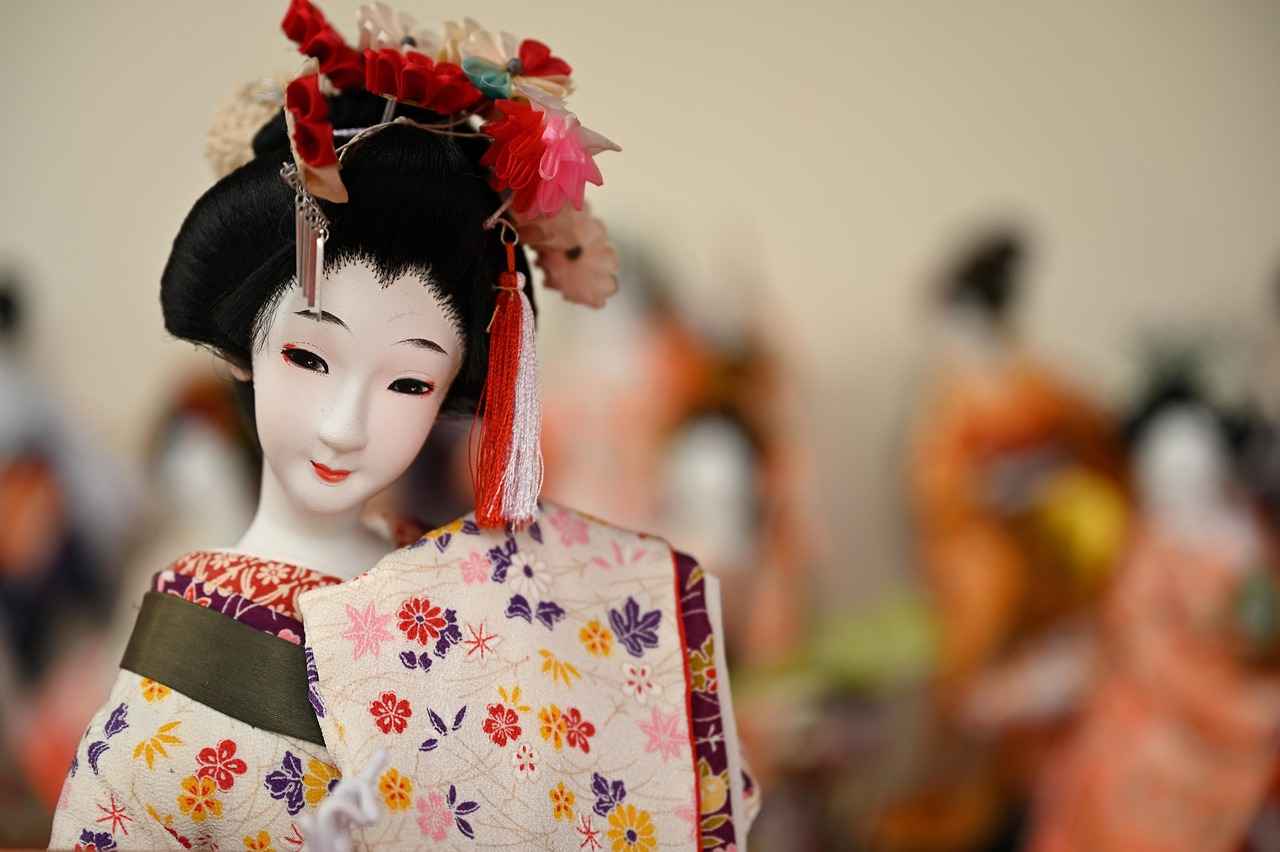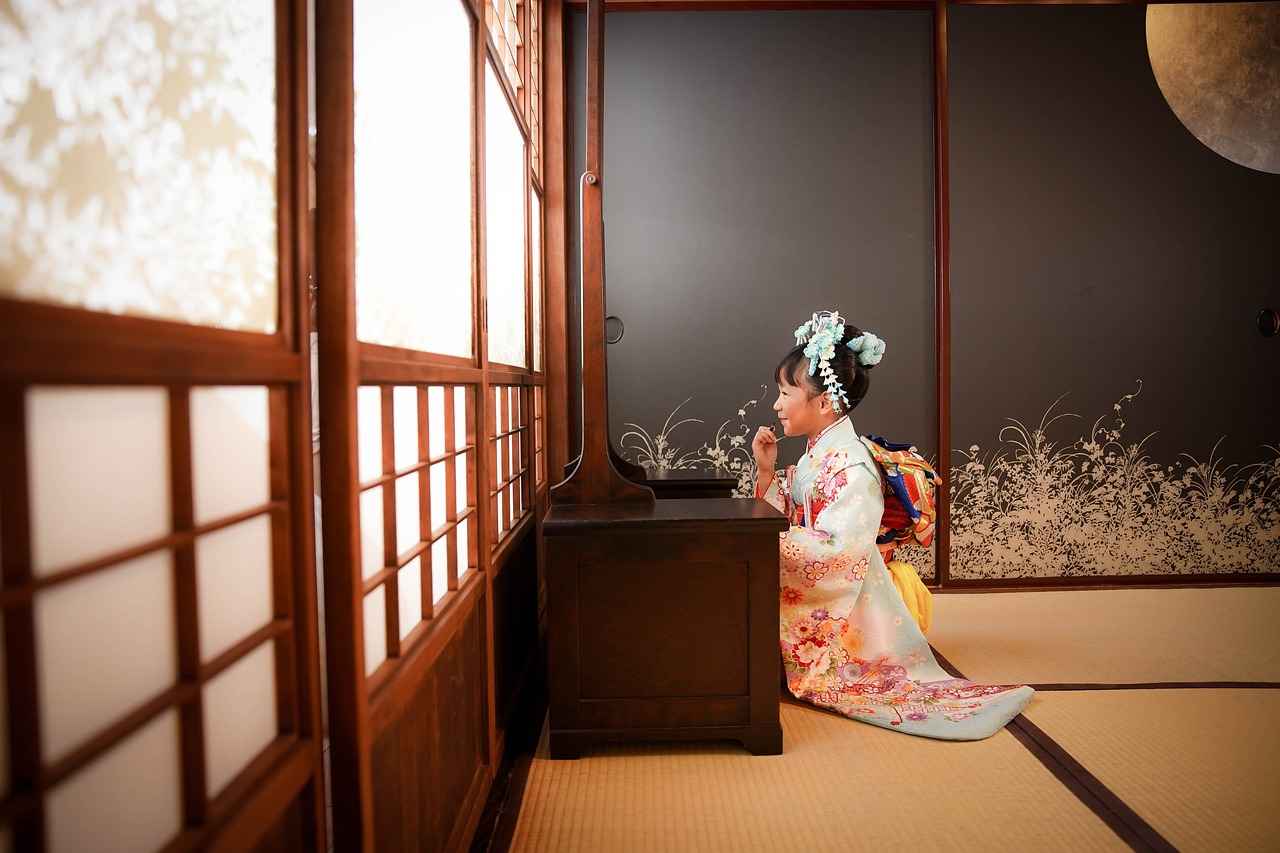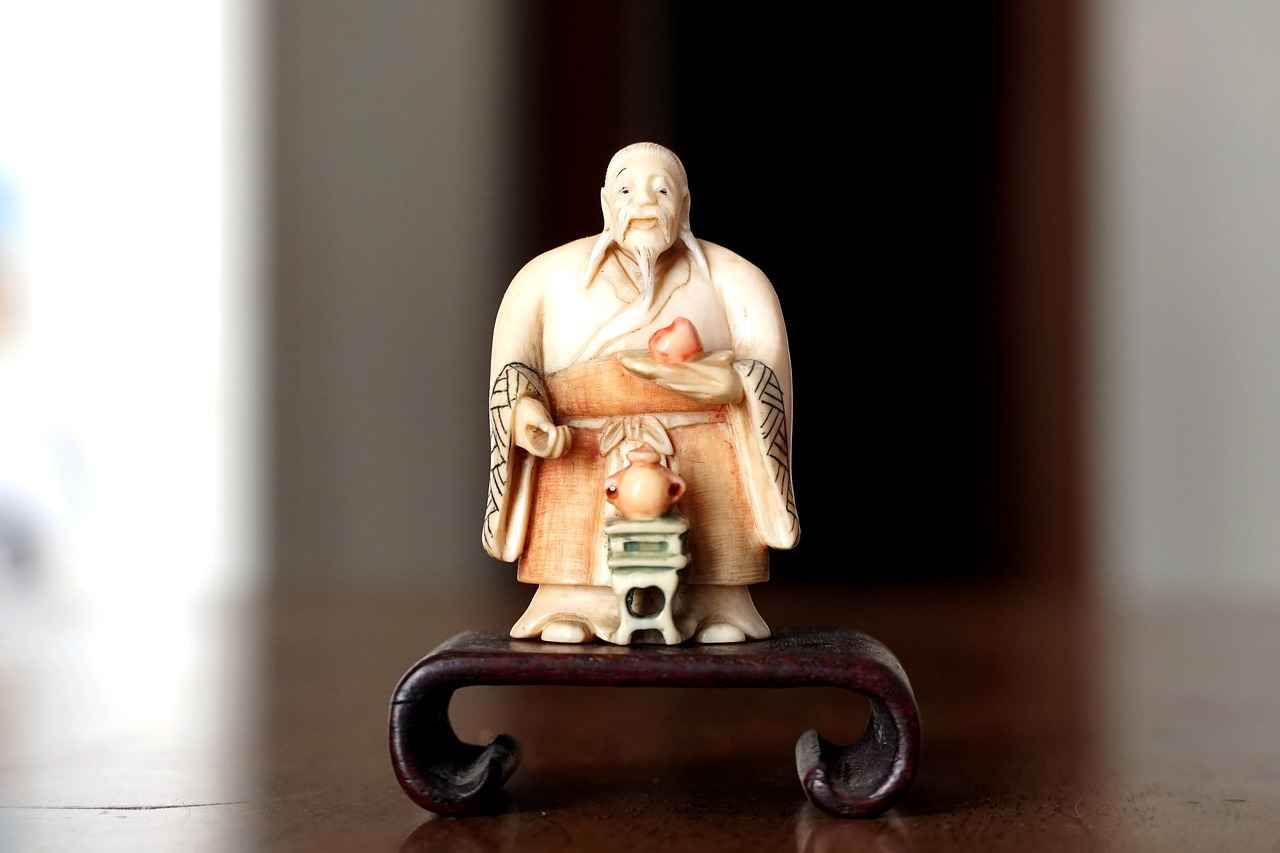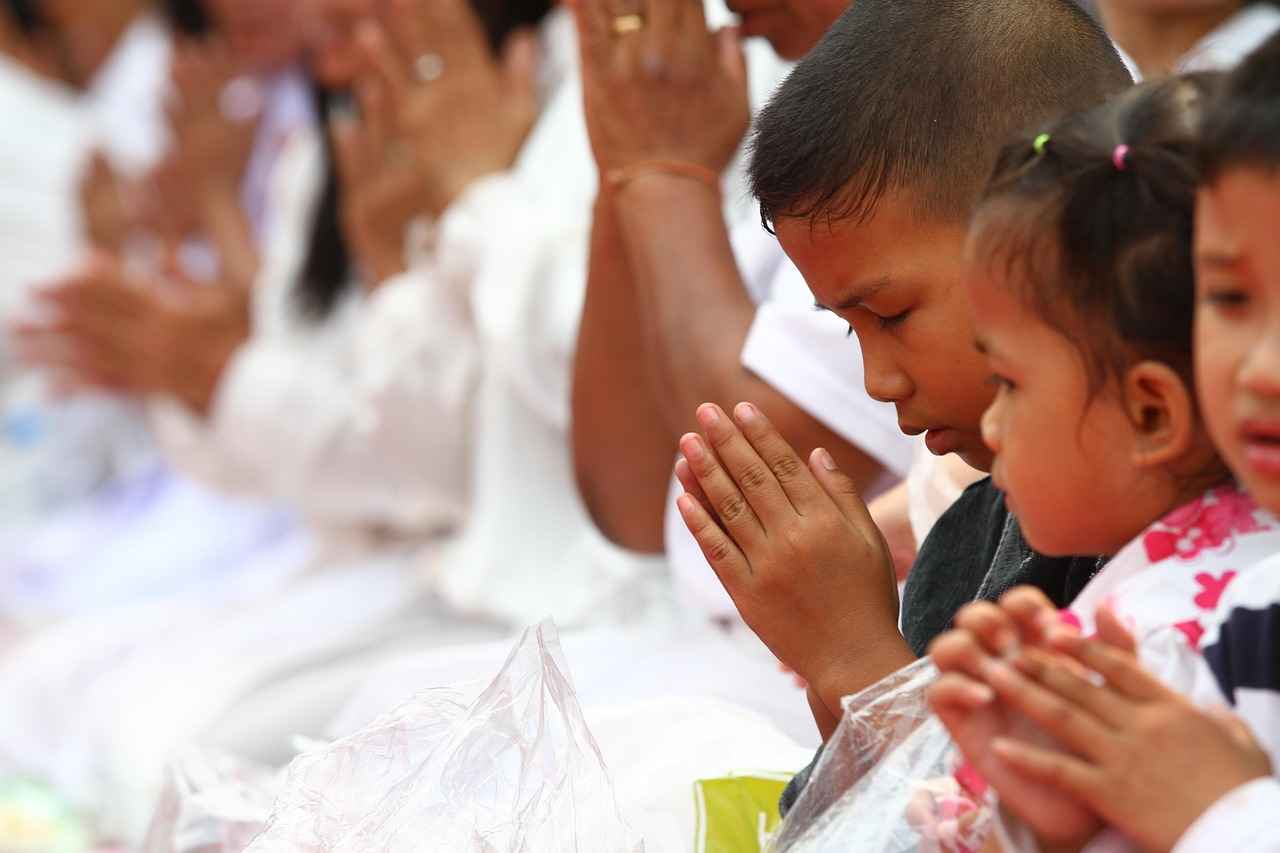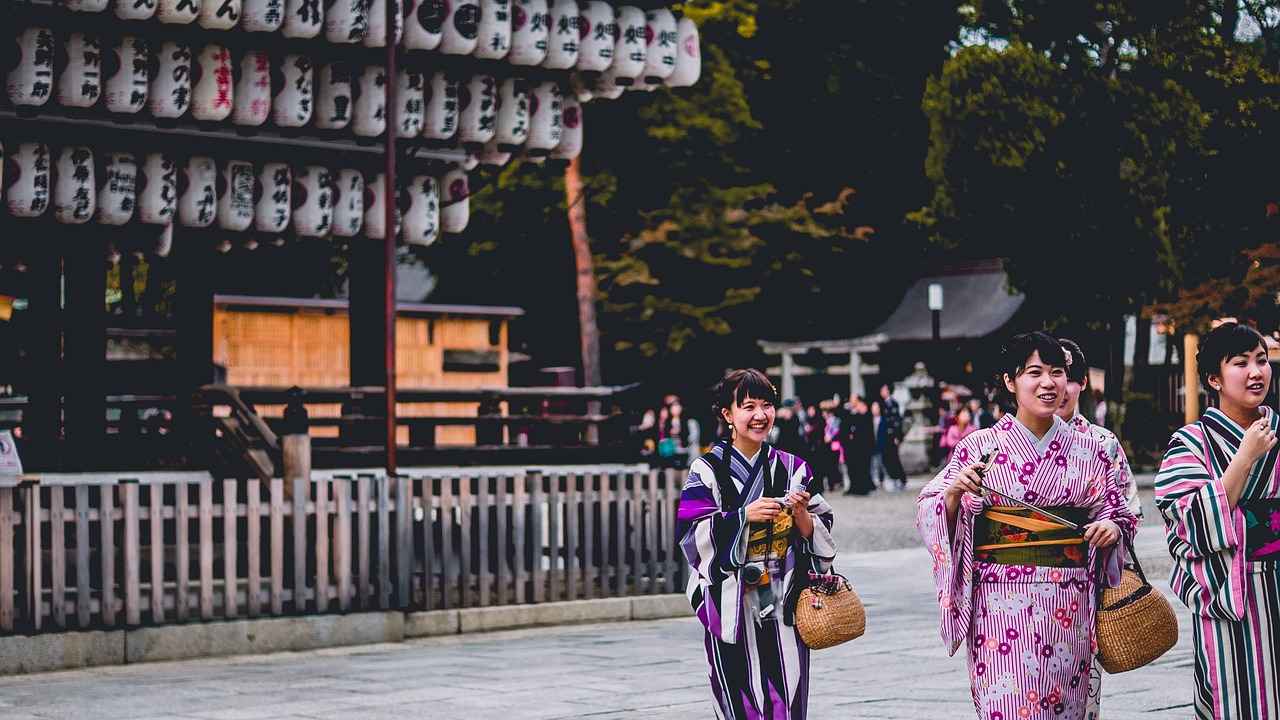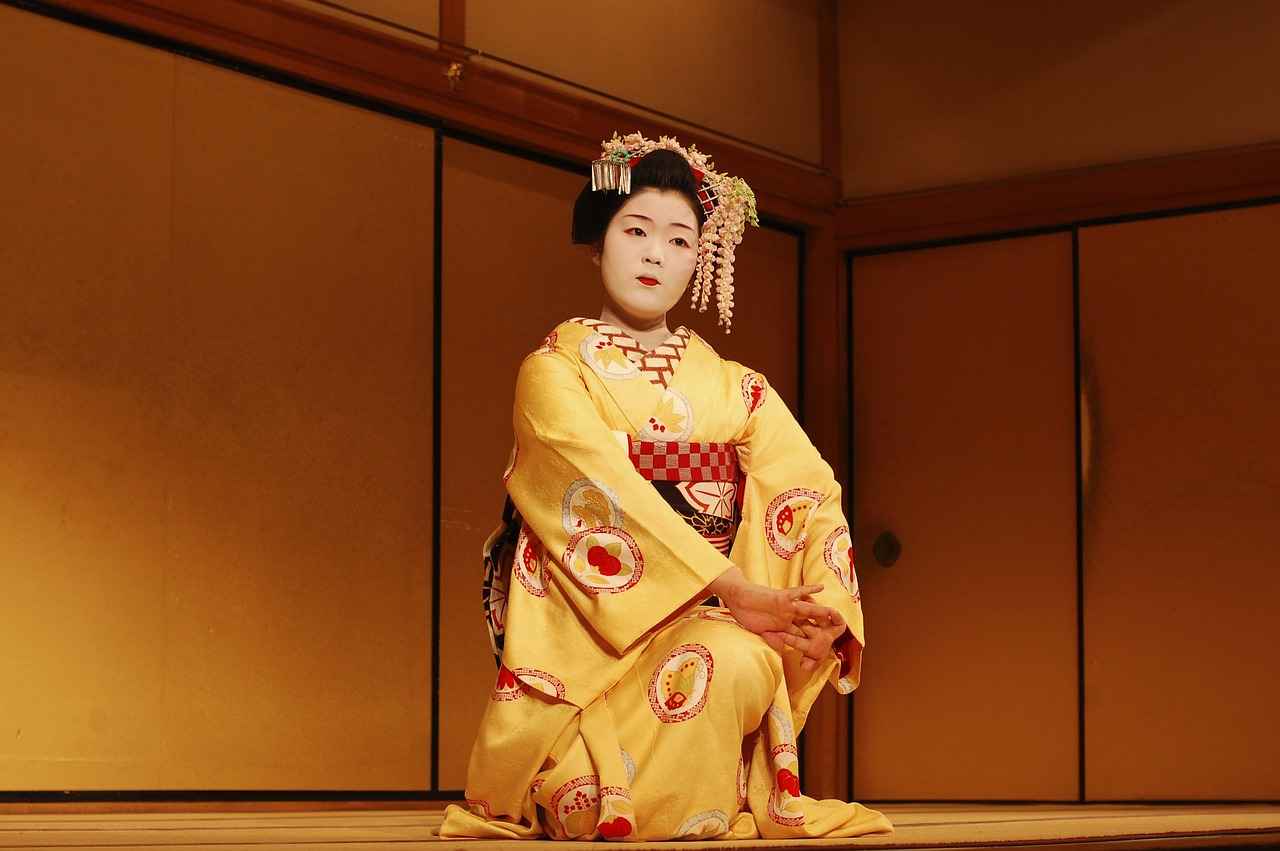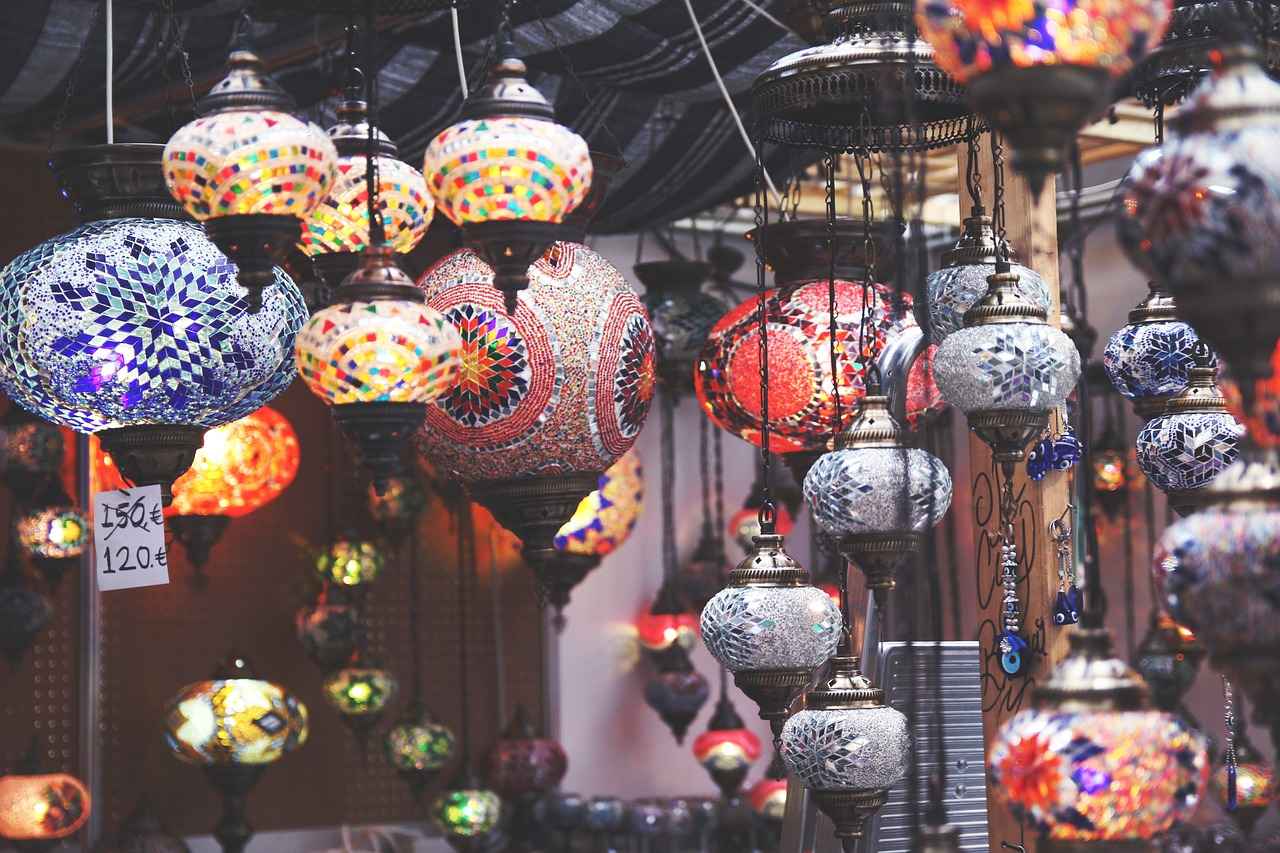The Geisha kimono is more than just a garment; it is a timeless symbol of Japanese tradition and artistry. This exquisite attire reflects a rich history, intricate designs, and deep cultural significance, making it an enduring icon in both Japan and around the world.
Historically, the Geisha kimono traces its roots back to the Edo period (1603-1868), a time when the role of Geishas began to flourish. Initially, these garments were worn by women of various social classes, but they eventually became synonymous with the elegant and skilled entertainers known as Geishas. The evolution of the kimono mirrors Japan’s changing societal norms and aesthetics, highlighting its importance in understanding Japanese culture.
The design elements of the Geisha kimono are particularly fascinating. Each kimono features intricate patterns and vibrant colors, which often hold significant meanings. For instance, cherry blossoms symbolize the transient nature of life, while cranes represent longevity and good fortune. These designs not only enhance the visual appeal of the kimono but also tell stories that resonate with the wearer’s identity and experiences.
In terms of materials, silk is the most coveted fabric for Geisha kimonos, renowned for its luxurious feel and sheen. However, cotton and synthetic fabrics have gained popularity among younger generations for their practicality and affordability. The choice of fabric plays a crucial role in the overall aesthetic and comfort of the kimono.
The role of the Geisha in Japanese culture extends beyond mere entertainment. They are custodians of traditional arts, including music, dance, and tea ceremonies, contributing significantly to Japan’s cultural heritage. The rigorous training that Geishas undergo ensures that these traditions are preserved and passed on to future generations.
As society evolves, so too does the perception of Geishas. While they have faced stereotypes and misconceptions, they continue to be celebrated as icons of Japanese culture. Understanding the etiquette involved in wearing a kimono and interacting with Geishas enhances the appreciation of their cultural significance.
Looking to the future, the Geisha kimono faces both challenges and opportunities. The revival of traditional crafts related to kimono making is gaining traction, and the garment’s influence is extending into global fashion trends. Designers worldwide are drawing inspiration from the Geisha kimono, integrating its elements into contemporary styles, thereby showcasing its timeless appeal.
In conclusion, the Geisha kimono stands as a testament to Japan’s rich cultural tapestry. Its historical roots, intricate designs, and ongoing relevance in modern society make it a captivating subject worthy of exploration.
![]()
Historical Background of the Geisha Kimono
The Geisha kimono is not merely a garment; it is a profound symbol of Japan’s cultural heritage, steeped in history and tradition. This iconic attire has evolved alongside Japanese society, reflecting its changing values, aesthetics, and social structures.
Originally, the kimono was a practical garment worn by both men and women in Japan. However, as the role of the geisha emerged in the 18th century, the kimono took on a new identity. Geishas, known for their skills in music, dance, and conversation, began to wear kimonos that were not only beautiful but also representative of their status. The geisha kimono became a canvas for intricate designs, each telling a story or symbolizing a seasonal theme.
| Era | Significance |
|---|---|
| 18th Century | Emergence of Geishas and the evolution of the kimono into a symbol of entertainment. |
| 19th Century | Increased artistry in kimono design, reflecting Japan’s cultural richness. |
| 20th Century | Modernization and globalization impacting traditional kimono styles. |
The design elements of the geisha kimono are particularly noteworthy. Each kimono is adorned with vibrant colors and intricate patterns, which often hold deep meanings. For instance, the use of cherry blossoms may signify the transient nature of life, while peacock feathers might represent beauty and grace. Furthermore, the way a kimono is worn can indicate the wearer’s age, marital status, and even the season.
In conclusion, the provides a fascinating glimpse into the complexities of Japanese culture. As it continues to evolve, the kimono remains an enduring symbol of the artistry and tradition that define Japan.
![]()
Design Elements of the Geisha Kimono
The Geisha kimono is a stunning representation of Japanese culture, characterized by its intricate designs and rich symbolism. Each kimono tells a story, reflecting the wearer’s personality, social status, and even the season. The artistry involved in creating these garments is not only a testament to traditional craftsmanship but also a vital aspect of Japan’s cultural heritage.
The design elements of the Geisha kimono are multifaceted, encompassing a wide range of patterns, colors, and textures. These elements are carefully chosen to convey deep meanings. For instance, floral motifs often symbolize beauty and transience, while geometric patterns can represent harmony and balance. The color palette is equally significant; each hue carries its own connotations, with red symbolizing good fortune and white often associated with purity.
Moreover, the construction of a Geisha kimono is an art form in itself. The way the fabric is draped and secured not only enhances the wearer’s silhouette but also reflects the meticulous attention to detail that defines this traditional attire. The obi, a wide belt worn around the waist, is often elaborately designed and serves as a focal point, showcasing the skill of the artisan who crafted it.
In addition to aesthetic appeal, the kimono’s designs often incorporate elements of nature, such as waves, mountains, and cherry blossoms, which resonate deeply with Japanese philosophies and the appreciation of the natural world. These designs serve as a reminder of the interconnectedness of life and the seasons.
In conclusion, the design elements of the Geisha kimono are a profound blend of beauty, symbolism, and cultural narrative. Each garment is a wearable piece of art that not only represents the rich history of Japan but also continues to inspire and captivate audiences worldwide.
Materials Used in Kimono Fabric
The selection of fabrics is a crucial aspect that significantly influences the overall appearance and feel of a kimono. Each fabric type brings its own unique qualities, contributing to the garment’s aesthetic and cultural significance. Here, we explore the most common materials used in kimono fabric, highlighting their distinct characteristics and uses.
| Material | Characteristics | Common Uses |
|---|---|---|
| Silk | Luxurious, soft, and has a natural sheen. It drapes beautifully and feels wonderful against the skin. | Formal occasions, traditional ceremonies, and Geisha attire. |
| Cotton | Durable, breathable, and easy to care for. It is less formal than silk but offers comfort and versatility. | Casual wear, summer kimonos, and everyday use. |
| Synthetic Fibers | Affordable and often easier to maintain. They can mimic the appearance of silk while offering greater durability. | Casual kimonos and modern adaptations. |
Among these materials, silk is often regarded as the premium choice for kimonos, especially in the context of Geisha attire. Its softness and sheen not only enhance the beauty of the garment but also reflect the wearer’s status and the occasion’s formality. Silk kimonos are typically adorned with intricate patterns and vibrant colors, making them a stunning choice for special events.
On the other hand, cotton and synthetic fibers provide practical alternatives that cater to the needs of younger generations and casual wearers. They are popular for their affordability and ease of maintenance, allowing more people to embrace the kimono tradition without the constraints of high costs associated with silk.
In conclusion, the choice of fabric in kimono making is not merely a matter of aesthetics; it embodies a rich tapestry of cultural significance and personal expression. Whether opting for the elegance of silk or the practicality of cotton, each material contributes to the unique narrative of the kimono.
Silk: The Premium Choice
When it comes to the exquisite Geisha kimono, the choice of fabric plays a pivotal role in defining its elegance and cultural significance. Among various materials, silk stands out as the most luxurious option, revered for its remarkable qualities that elevate the kimono to a work of art.
Silk is celebrated for its softness and sheen, providing a tactile experience that is both luxurious and comfortable. The fabric drapes beautifully, allowing the intricate designs and patterns to flow gracefully, which is essential for the aesthetic appeal of a Geisha’s attire. This unique quality of silk not only enhances the visual beauty but also contributes to the overall experience of wearing a kimono.
Moreover, the sheen of silk reflects light in a way that adds depth and richness to the colors used in the kimono. Traditional patterns, often rich in symbolism, come alive in silk, making each piece not just clothing but a canvas of cultural storytelling. Each design can represent various aspects of Japanese culture, history, and seasonal changes, making silk kimonos particularly cherished for special occasions.
In addition to its aesthetic qualities, silk also has practical benefits. It is a breathable fabric, making it suitable for both warm and cooler climates. This versatility has made silk a preferred choice not only for Geishas but also for formal events and traditional ceremonies throughout Japan.
While silk kimonos are often seen as a symbol of luxury, they also carry a sense of heritage. The art of silk weaving is steeped in history, with techniques passed down through generations, highlighting the importance of craftsmanship in Japanese culture. As such, a silk kimono is not merely a garment but a testament to the skill and dedication of artisans.
In conclusion, silk remains the premium choice for Geisha kimonos, embodying the perfect blend of beauty, comfort, and cultural significance. Its luxurious nature ensures that it will continue to be a symbol of elegance and tradition in Japanese society for years to come.
Cotton and Synthetic Options
When it comes to kimono fabrics, the traditional choice has long been silk, renowned for its luxurious feel and elegant appearance. However, in recent years, cotton and synthetic fabrics have gained popularity, particularly among younger generations and for casual wear. These alternatives offer a variety of benefits that cater to modern lifestyles.
Affordability and Accessibility
Cotton kimonos are often more affordable than their silk counterparts, making them accessible to a wider audience. This affordability allows individuals to embrace traditional Japanese attire without the hefty price tag associated with silk. Additionally, synthetic fabrics, such as polyester, can mimic the look and feel of silk while being even more budget-friendly.
Comfort and Practicality
One of the main advantages of cotton and synthetic kimonos is their comfort. Cotton is breathable and soft, making it ideal for warmer climates or casual outings. Synthetic options, on the other hand, are often designed to be wrinkle-resistant and easy to care for, appealing to those who lead busy lives. This practicality makes them perfect for everyday wear or informal gatherings.
Variety of Designs
Both cotton and synthetic fabrics come in a wide array of colors and patterns, allowing for personal expression and creativity. From vibrant prints to subtle pastels, there is a style to suit every taste. This variety is particularly attractive to younger generations who seek to blend traditional aesthetics with contemporary fashion.
Environmental Considerations
As sustainability becomes a priority for many consumers, the environmental impact of fabric choices is increasingly scrutinized. While traditional cotton farming can be resource-intensive, advancements in sustainable practices are making cotton a more eco-friendly option. Similarly, some synthetic fabrics are now produced using recycled materials, reducing waste and promoting a more sustainable fashion industry.
In conclusion, while silk remains the quintessential choice for formal kimonos, cotton and synthetic options provide a practical and affordable alternative. Their comfort, variety, and evolving sustainability practices make them popular choices for casual wear, bridging the gap between tradition and modernity.
Color Symbolism in Kimonos
The color symbolism in kimonos is a fascinating aspect of Japanese culture that reflects a deep connection between colors and their meanings. Each hue is thoughtfully selected to convey a range of emotions, signify different seasons, and mark special occasions. This intricate relationship enhances the garment’s visual narrative and cultural significance, making it much more than just clothing.
For instance, the color red is often associated with happiness and prosperity, making it a popular choice for celebrations such as weddings. In contrast, blue is linked to calmness and serenity, often seen in kimonos worn during more subdued events. The seasonal changes also play a crucial role; green represents spring and renewal, while orange is a color that signifies the warmth of autumn.
Moreover, black is traditionally worn at funerals, symbolizing mourning and respect for the deceased. This illustrates how deeply ingrained the symbolism of colors is in the cultural fabric of Japan. Each color not only enhances the aesthetic appeal of the kimono but also serves as a visual language that communicates the wearer’s emotions and intentions.
Furthermore, the patterns and motifs that accompany these colors are equally significant. For example, floral designs in a kimono may represent beauty and transience, reflecting the Japanese appreciation for nature’s fleeting moments. As such, the choice of color and design becomes a powerful means of storytelling, enriching the kimono’s narrative.
In conclusion, understanding the color symbolism in kimonos provides valuable insight into the cultural significance of this traditional garment. It reveals a world where colors are not merely visual elements but are imbued with profound meanings that resonate with the wearer and the observer alike.
![]()
The Role of the Geisha in Japanese Culture
Geishas are often misunderstood figures within Japanese culture, yet they hold a significant place as custodians of traditional arts. Their role extends far beyond mere entertainment; they are skilled practitioners of various cultural forms, including music, dance, and the intricate art of tea ceremonies. This rich tapestry of skills not only entertains but also preserves Japan’s cultural heritage.
Historically, the geisha emerged in the 18th century, evolving from the earlier roles of women in the entertainment industry. They became symbols of grace and sophistication, embodying the essence of Japanese aesthetics. Through their performances, geishas convey stories and emotions that resonate with audiences, making them pivotal in the transmission of cultural narratives.
One of the most fascinating aspects of a geisha’s role is their extensive training. Becoming a geisha requires years of dedication, where young women, known as maiko, learn traditional dance, music, and the art of conversation. This rigorous training emphasizes not just skill but also discipline and cultural knowledge, ensuring that each geisha is a well-rounded representative of Japan’s artistic heritage.
In contemporary society, the perception of geishas has shifted. While they were once viewed primarily through a lens of romanticism, there is now a growing recognition of their contributions to preserving traditional arts. Many people are beginning to appreciate the cultural significance of geishas, viewing them as essential figures in the ongoing narrative of Japanese culture.
Moreover, the role of geishas is evolving. As modern influences permeate traditional practices, they are adapting while still honoring their roots. This balance allows geishas to remain relevant in today’s society, ensuring that their legacy continues to thrive.
In conclusion, geishas are much more than entertainers; they are vital links to Japan’s past, embodying the beauty and complexity of its cultural heritage. Their ongoing influence in both traditional and modern contexts highlights their importance in the fabric of Japanese society.
Training and Skills of a Geisha
Becoming a Geisha is a journey that involves years of dedicated training, focusing on various traditional arts that are integral to Japanese culture. This rigorous process not only emphasizes discipline and grace but also fosters a deep understanding of the cultural heritage that Geishas represent.
The training typically begins at a young age, often around 15, when aspiring Geishas, known as Maiko, enter an Okiya (Geisha house). Here, they learn the foundational skills necessary for their future roles. The training encompasses:
- Traditional Dance: Maikos learn various forms of classical Japanese dance, which are crucial for performances at tea houses.
- Music: Mastery of traditional instruments, such as the shamisen, is essential, allowing them to accompany their dances and entertain guests.
- Tea Ceremony: Understanding the art of the tea ceremony is vital, as it reflects the elegance and grace expected of a Geisha.
- Conversation Skills: Geishas are trained to engage in witty and charming conversation, making them skilled entertainers.
In addition to these artistic skills, Geishas also learn the nuances of etiquette and social interaction. This training ensures that they can navigate the complex social dynamics of their role, which is not just about performance but also about building relationships with clients.
The path to becoming a fully-fledged Geisha, or Geiko, can take up to five years or more. This extensive training is what contributes to their iconic status in Japanese culture, as each Geisha becomes a living embodiment of Japan’s rich artistic traditions.
As society evolves, the role of Geishas continues to adapt, but the core values of discipline, grace, and cultural knowledge remain unchanged, ensuring that the legacy of Geishas endures.
Modern Perceptions of Geishas
The modern perception of Geishas has undergone significant transformation over the years. Once viewed solely as entertainers, Geishas are now recognized as vital custodians of Japanese culture and tradition. This shift in understanding highlights the complexity of their role within society, moving beyond stereotypes that have often overshadowed their true essence.
Historically, Geishas were celebrated for their artistic skills in traditional music, dance, and tea ceremonies. However, contemporary society often grapples with misconceptions that reduce their identity to mere stereotypes. These misconceptions can stem from popular media portrayals that fail to capture the depth and richness of their cultural contributions. Geishas are not simply entertainers; they are highly trained artists who dedicate years to mastering their crafts.
In recent years, there has been a growing movement to educate the public about the true role of Geishas. This includes highlighting their extensive training, which encompasses various traditional arts, and the discipline required to excel in this demanding profession. As such, many are beginning to appreciate Geishas as symbols of resilience and cultural preservation.
Furthermore, the globalization of culture has led to a renewed interest in Geisha traditions, with many people seeking authentic experiences that connect them to Japan’s rich heritage. This has resulted in a more nuanced understanding of their significance, as they are now seen as ambassadors of culture rather than mere performers.
In conclusion, while stereotypes and misconceptions about Geishas persist, there is a growing recognition of their vital role in Japanese culture. By celebrating their artistry and understanding their historical significance, contemporary society can foster a deeper appreciation for these remarkable individuals and the traditions they embody.
![]()
Kimono Etiquette and Wearing Techniques
Wearing a Geisha kimono is an art that goes beyond mere clothing; it is a representation of Japan’s rich cultural heritage. The process of donning this intricate garment involves specific etiquette and techniques that highlight the significance of tradition in Japanese society.
The first step in wearing a Geisha kimono is to understand the importance of layering. Traditionally, kimonos are worn in layers, with each layer serving a purpose, both aesthetically and functionally. The innermost layer, known as the juban, is typically made of cotton or silk and is worn to protect the outer kimono from sweat and body oils.
Proper Techniques for Tying and Wearing
- Obi Tying: The obi, or sash, is a crucial element of the kimono ensemble. It is tied in a specific manner, often featuring elaborate knots that vary in style depending on the occasion. The most common knot for Geishas is the taiko obi, which resembles a drum.
- Folding the Kimono: The kimono should be wrapped around the body with the left side over the right, as the reverse is reserved for funerals. The sleeves must be adjusted to fall gracefully, enhancing the overall silhouette.
- Footwear: Traditional footwear, such as geta or zori, completes the look. The choice of footwear can vary based on the season and the formality of the occasion.
Etiquette When Wearing a Kimono
Understanding the etiquette surrounding kimono wear is essential. When interacting with others while dressed in a kimono, it is customary to bow slightly, as this shows respect. Additionally, one should avoid crossing their arms, as this can disrupt the garment’s flow and appearance.
In conclusion, wearing a Geisha kimono is a practice steeped in tradition, requiring knowledge of specific techniques and etiquette. By adhering to these customs, individuals not only honor the garment itself but also the cultural narratives it embodies, ensuring that this timeless symbol of Japanese heritage continues to be celebrated.
How to Properly Wear a Kimono
Wearing a kimono is not just about putting on a beautiful garment; it is a cultural practice steeped in history and tradition. Understanding the correct technique is essential for preserving the kimono’s aesthetic and cultural integrity. Here are detailed steps to guide you through the process:
- Choose the Right Kimono: Select a kimono that suits the occasion. Kimonos come in various styles, fabrics, and patterns, each with its own significance.
- Wear a Nagajuban: This is an undergarment worn beneath the kimono. It protects the kimono from sweat and dirt, maintaining its pristine condition.
- Put on the Kimono: Start by draping the kimono over your shoulders. Ensure that the left side overlaps the right side, as this is the traditional way to wear it.
- Adjust the Length: The hem of the kimono should ideally fall just above the ankles. Adjust the fabric accordingly by folding it at the waist.
- Secure with an Obi: The obi is a wide belt that holds the kimono in place. Wrap it around your waist and tie it in a bow at the back. The style of the knot can vary depending on the formality of the occasion.
- Accessorize: Consider adding an obiage (a decorative cloth) and an obiita (a stiffener) for added elegance and structure.
- Final Adjustments: Make sure the sleeves are even and the overall fit is comfortable. Adjust any accessories to ensure they complement the kimono.
Each of these steps is vital in showcasing the beauty and significance of the kimono. By learning how to wear a kimono properly, you not only honor the garment itself but also the rich traditions it represents in Japanese culture.
Etiquette When Interacting with Geishas
Engaging with Geishas is a unique experience that offers a glimpse into Japan’s rich cultural heritage. To ensure that this interaction is respectful and enjoyable, it’s essential to understand the proper etiquette associated with it. This not only enhances your experience but also shows deep respect for the Geishas and the traditions they uphold.
- Approach with Respect: Always approach a Geisha with a sense of respect. A simple bow can go a long way in showing appreciation for their art and culture.
- Use Formal Language: When speaking to a Geisha, use polite and formal language. This demonstrates your acknowledgment of their status and role in society.
- Follow Their Lead: Geishas are trained to guide interactions. Pay attention to their cues and follow their lead regarding conversation topics and activities.
- Avoid Personal Questions: While it may be tempting to ask personal questions, it’s best to keep the conversation light and focused on cultural topics, such as their art and performances.
- Respect Their Space: Physical boundaries are important. Avoid touching or getting too close unless invited to do so, as this is a sign of respect for their personal space.
- Appreciate the Performance: If you are attending a performance, show appreciation through applause at appropriate moments, but avoid excessive noise or interruptions.
- Be Mindful of Photography: Always ask for permission before taking photographs. Many Geishas prefer to maintain an air of mystery and may not want their images shared publicly.
By adhering to these guidelines, you can ensure that your interaction with Geishas is not only respectful but also enriching. Remember, Geishas are not just entertainers; they are custodians of a profound cultural legacy, and engaging with them is an opportunity to appreciate this beautiful tradition.
![]()
The Future of the Geisha Kimono
As the world of fashion continually evolves, the Geisha kimono stands at a crossroads, facing both challenges and opportunities in modern society. This iconic garment, steeped in tradition, is now prompting discussions about its relevance and adaptation in contemporary fashion.
In recent years, there has been a noticeable revival of interest in traditional Japanese attire, including the Geisha kimono. Many designers are exploring ways to incorporate these timeless elements into modern wardrobes, thus bridging the gap between old and new. This fusion not only allows the kimono to remain relevant but also ensures that its rich cultural heritage is celebrated and preserved.
One of the significant challenges the Geisha kimono faces is the perception of its exclusivity. Often viewed as a garment reserved for special occasions, there is a growing movement advocating for its everyday wear. This shift in perspective encourages younger generations to embrace the kimono as a versatile fashion statement, rather than a relic of the past.
Moreover, the globalization of fashion has led to an increased appreciation for the artistry behind the kimono. Designers worldwide are drawing inspiration from its intricate patterns and colors, integrating these elements into contemporary designs. This trend not only highlights the kimono’s aesthetic appeal but also promotes a deeper understanding of its cultural significance.
As discussions around sustainability gain momentum, the Geisha kimono’s traditional craftsmanship is being recognized for its potential to contribute to eco-friendly fashion. The revival of artisanal techniques and the use of natural materials resonate with modern consumers who prioritize sustainability in their purchasing decisions.
In conclusion, while the Geisha kimono faces challenges in a rapidly changing fashion landscape, it also has numerous opportunities for adaptation and revival. By embracing its cultural significance and integrating it into contemporary fashion, the Geisha kimono can continue to thrive as a symbol of Japanese artistry and tradition.
Revival of Traditional Crafts
The associated with kimono making is not just a trend; it represents a significant cultural movement aimed at preserving Japan’s rich heritage. As interest in these artisanal techniques grows, many artisans and enthusiasts are working tirelessly to ensure that the intricate skills involved in kimono production are passed down through generations. This resurgence is fueled by a combination of factors, including a desire for authenticity in fashion, environmental consciousness, and a deep appreciation for cultural identity.
One of the primary drivers of this revival is the increasing demand for handmade products. Consumers are becoming more aware of the environmental impact of mass production and are opting for sustainable alternatives. Traditional kimono-making techniques, which often utilize natural dyes and materials, align perfectly with this shift towards eco-friendly fashion. Artisans are embracing these methods, ensuring that each piece is not only beautiful but also ethically produced.
The cultural significance of the kimono cannot be overstated. Each garment tells a story, with its colors, patterns, and styles reflecting the wearer’s identity, season, and occasion. As more people seek to connect with their cultural roots, the kimono has emerged as a powerful symbol of Japanese heritage. Workshops and classes focused on kimono-making are gaining popularity, allowing individuals to engage directly with this art form.
Moreover, the digital age has facilitated a global appreciation for traditional crafts. Social media platforms showcase the intricate beauty of kimonos, creating a community of enthusiasts who share their passion and knowledge. This online presence has not only increased visibility but has also attracted a younger audience eager to learn about and participate in these time-honored practices.
In conclusion, the revival of traditional crafts related to kimono making is a testament to the enduring appeal of cultural heritage. As artisans continue to hone their skills and share their knowledge, the future of kimono-making looks bright, promising a harmonious blend of tradition and modernity.
Influence on Global Fashion Trends
The Geisha kimono is not just a traditional garment; it has become a global fashion icon that transcends cultural boundaries. Its intricate designs and rich history have captivated designers and fashion enthusiasts around the world, leading to a remarkable influence on contemporary fashion trends.
As fashion evolves, the Geisha kimono’s influence can be seen in various aspects of modern clothing. Many designers incorporate elements such as the kimono sleeve, vibrant colors, and intricate patterns into their collections. This fusion of traditional and modern styles has resulted in a unique aesthetic that appeals to a wide audience.
Moreover, the rise of streetwear has further propelled the kimono into the limelight. Fashion-forward individuals often pair kimono-inspired jackets with casual outfits, creating a striking contrast that highlights the garment’s versatility. This trend showcases how the Geisha kimono can be adapted to fit contemporary lifestyles while retaining its cultural significance.
In addition to clothing, the Geisha kimono’s motifs have inspired accessories such as handbags, scarves, and even footwear. These items often feature traditional designs, allowing wearers to embrace Japanese culture in their everyday lives. This cross-cultural exchange enriches the global fashion landscape, fostering a greater appreciation for diverse traditions.
As we look to the future, the Geisha kimono continues to inspire a new generation of designers. With a growing emphasis on sustainability and ethical fashion, many are turning to traditional crafts and techniques associated with kimono-making. This revival not only preserves the artistry of the kimono but also ensures its relevance in a rapidly changing fashion industry.
In conclusion, the Geisha kimono’s influence on global fashion trends is undeniable. Its ability to blend tradition with modernity makes it a timeless piece that will continue to inspire designers and fashion lovers alike.
Frequently Asked Questions
- What is the significance of the Geisha kimono?
The Geisha kimono is a powerful symbol of Japanese culture and tradition. It reflects the artistry and craftsmanship that has been passed down through generations, showcasing intricate designs that tell stories and convey deep meanings.
- What materials are commonly used to make Geisha kimonos?
Geisha kimonos are primarily made from silk, which is prized for its luxurious feel and sheen. However, cotton and synthetic fabrics are also used, especially for casual wear, making kimonos accessible to a wider audience.
- How do colors in kimonos convey meaning?
Colors in kimonos are chosen with great care, representing emotions, seasons, and special occasions. For instance, vibrant reds might symbolize joy and celebration, while softer hues can signify tranquility and elegance.
- What is the training process for becoming a Geisha?
Becoming a Geisha involves years of dedicated training in traditional arts such as music, dance, and tea ceremonies. This rigorous training emphasizes discipline, grace, and a deep understanding of cultural heritage.
- What etiquette should one follow when interacting with Geishas?
When engaging with Geishas, it’s important to show respect by following proper etiquette, such as being polite, listening attentively, and refraining from intrusive questions about their personal lives.
- Is the Geisha kimono still relevant today?
Absolutely! The Geisha kimono continues to inspire modern fashion trends while also facing challenges. Its unique designs and cultural significance ensure that it remains a celebrated part of Japanese heritage.




